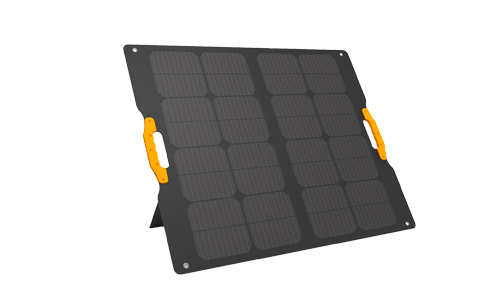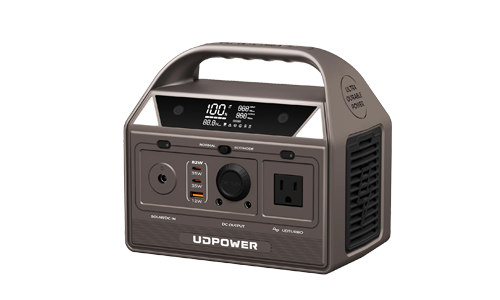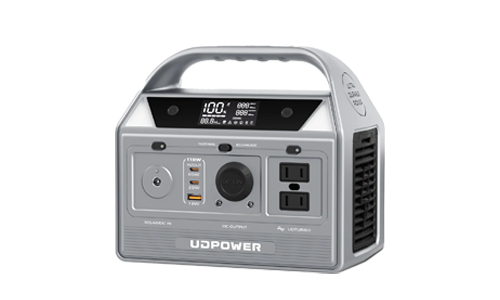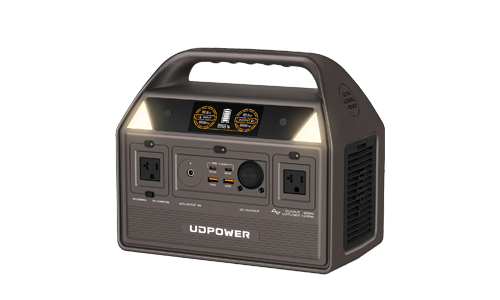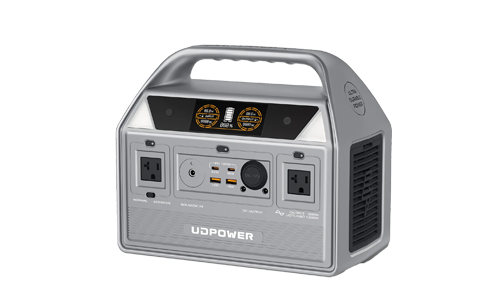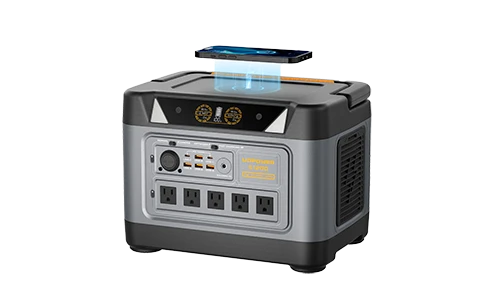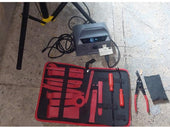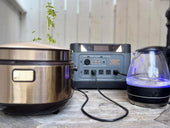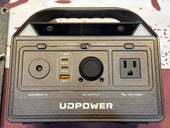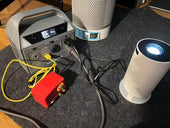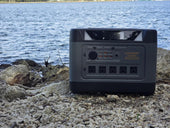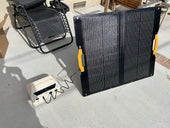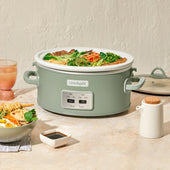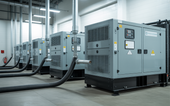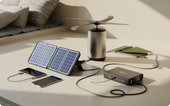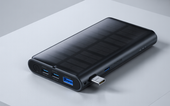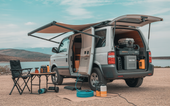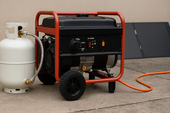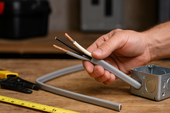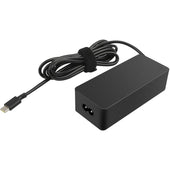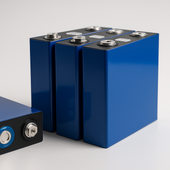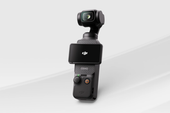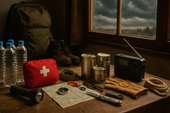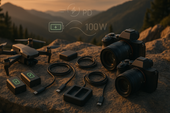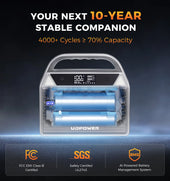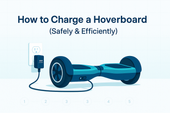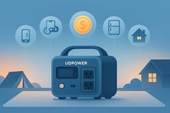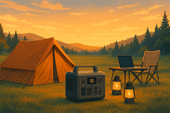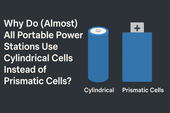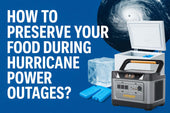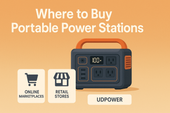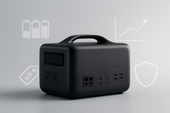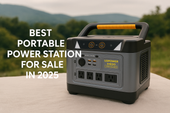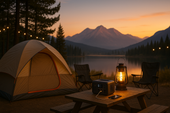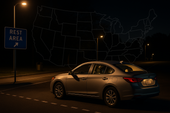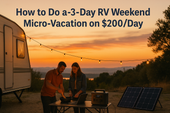How to Get Power When Camping Off-Grid?
ZacharyWilliamOff-grid camping is all about freedom and adventure, but staying powered up in the wild can be tricky. Whether you need to charge your phone, power a mini fridge, or run a CPAP machine, this guide will show you the best ways to get electricity when you're far from any outlet.

Table of Contents
- How to Get Power When Camping Off-Grid
- Factors That Determine Your Off-Grid Power Needs
- Must-Have Devices to Power When Camping
- Portable Power Station vs. Gas Generator
- Choosing the Right Setup: Scenarios
- Tips to Extend Battery Life While Camping
- Safety Considerations for Off-Grid Power Use
- Final Thoughts & Recommendations
- FAQs
1. How to Get Power When Camping Off-Grid
🔋 Use a Portable Power Station
Portable power stations are the most versatile and user-friendly off-grid power solutions. Look for lithium iron phosphate (LiFePO4) batteries for better lifespan and safety. A 500Wh–1500Wh unit is ideal for most campers.

☀️ Harness Solar Energy with Foldable Solar Panels
Pair your power station with solar panels to recharge during the day. Here’s a simple power generation guide:
| Panel Wattage | Daily Output (Sun Hours: 5) | Recommended Usage |
|---|---|---|
| 100W | ~500Wh/day | Phones, lights, small electronics |
| 200W | ~1000Wh/day | Mini fridge, fan, laptop |
| 400W | ~2000Wh/day | Multiple devices, CPAP, cooking gear |
Note: Solar output depends on sunlight conditions, location, and angle. These are average values for 5 full sun hours per day.
🚗 Use Your Vehicle as a Generator
Cars can charge power stations via a 12V outlet or directly using an inverter. This is great in emergencies but isn’t sustainable for long trips.
🔦 Other Quick Options
- Power banks: Great for phones and headlamps
- Hand-crank generators: Limited power, good for emergencies only
- AA/AAA battery packs: Useful for flashlights and small radios
2. Factors That Determine Your Off-Grid Power Needs
- Trip Duration: Longer trips = more battery capacity needed
- Number of Devices: Phones, cameras, fans, etc.
- People in Group: More people = more shared usage
- Weather: Overcast days reduce solar efficiency
3. Must-Have Devices to Power When Camping
| Device | Average Power Consumption (W) | Daily Runtime (hrs) | Daily Energy (Wh) |
|---|---|---|---|
| Phone | 5 | 2 | 10 |
| LED Light | 10 | 4 | 40 |
| Mini Fridge | 60 | 8 | 480 |
| Laptop | 50 | 3 | 150 |
| CPAP Machine | 40 | 8 | 320 |
Explanation: Multiply wattage by hours used daily to estimate total power consumption per device.
4. Portable Power Station vs. Gas Generator
| Feature | Portable Power Station | Gas Generator |
|---|---|---|
| Noise | Silent (~30dB) | Loud (~60–80dB) |
| Fumes | Zero emissions | Emits carbon monoxide |
| Fuel Type | Battery + Solar | Gasoline/Diesel |
| Usability Indoors | Safe | Not recommended |
| Maintenance | Low | High (oil, fuel checks) |
Verdict: For quiet, clean, and safe camping, a portable power station is a superior choice over traditional generators.
5. Choosing the Right Setup: Scenarios
| Scenario | Suggested Setup |
|---|---|
| Solo minimalist camper | Power bank (10,000mAh) + 100W solar panel |
| Couple weekend trip | 500Wh power station + 200W solar panel |
| Family RV camping | 1500Wh power station + 400W solar panels |
6. Tips to Extend Battery Life While Camping
- Use LED lights and low-wattage devices
- Only charge devices when necessary
- Turn off unused outputs on your power station
- Recharge during the day, even partially
- Pre-charge everything before your trip
7. Safety Considerations for Off-Grid Power Use
- Use weather-resistant cables and covers
- Avoid charging in rain or wet environments
- Keep batteries away from direct sunlight or extreme heat
- Use surge protectors for sensitive devices
8. Final Thoughts & Recommendations
Going off-grid doesn’t mean going powerless. Whether you’re a weekend hiker or a long-term RV explorer, a proper power setup keeps you connected, comfortable, and safe.
We recommend exploring UDPOWER's portable power stations for reliable, solar-compatible energy solutions trusted by outdoor adventurers.
9. FAQs
Can I run a refrigerator off a portable power station?
Yes. A mini fridge (~60W) can run for 6–8 hours on a 500Wh unit, or over 24 hours on a 1500Wh station.
How many solar panels do I need for camping?
For a weekend trip, 100–200W is often enough. For extended stays, 400W+ provides more flexibility.
Is it safe to use a power station in a tent?
Yes, they produce no fumes. But avoid blocking ventilation or placing near wet areas.
What’s the best way to charge my power station in the wild?
Use solar panels during daylight, and top up from your car if needed.
Do solar panels work in cloudy conditions?
Yes, but output drops by 50% or more. Consider oversized panels for better efficiency.
How long does it take to charge from solar?
A 500Wh battery with a 100W panel takes about 6–8 hours in full sun.
What capacity do I need for a CPAP machine?
At least 300–500Wh for one night, depending on pressure settings and humidifier use.
Can I take my power station on a plane?
Most airlines limit carry-on batteries to < 100Wh. Check with the airline before flying.
What maintenance does a power station require?
Keep it charged every 3–6 months, store in cool/dry areas, and avoid over-discharge.
Is it better to rent or buy off-grid gear?
If you camp frequently, buying pays off in the long run. For rare use, renting may be cost-effective.
